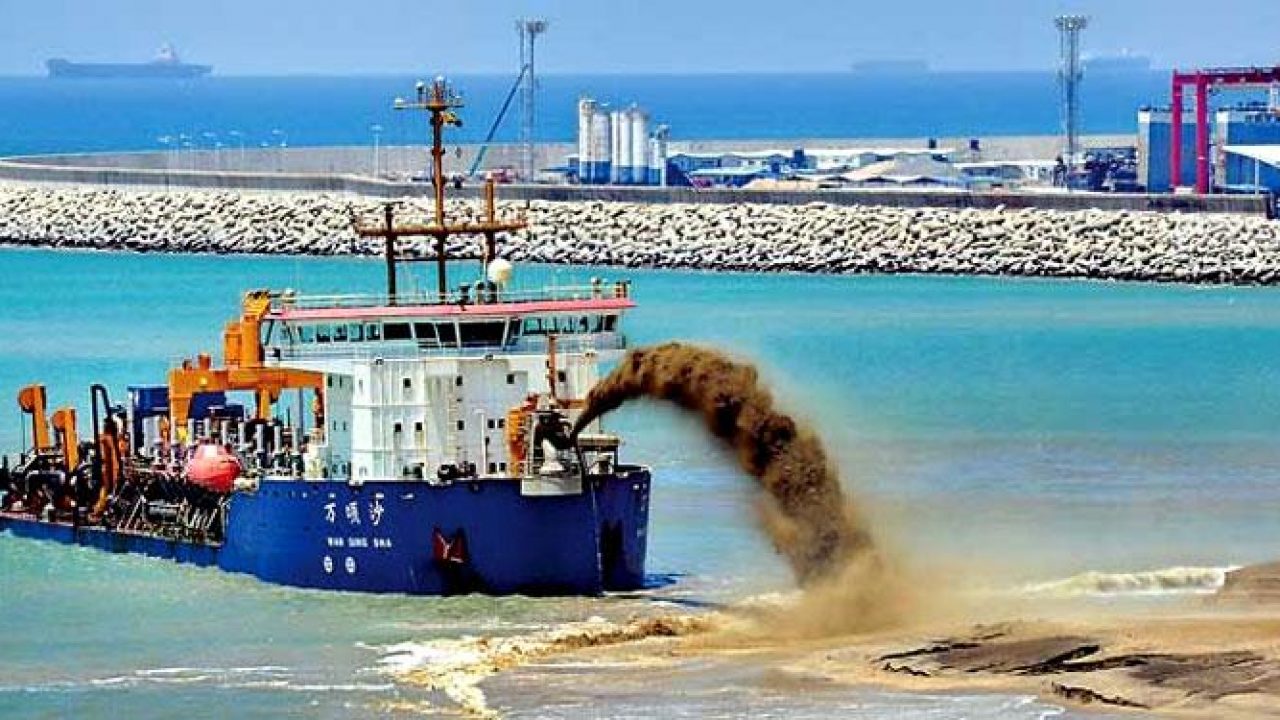Ahmedabad
(Head Office)Address : 506, 3rd EYE THREE (III), Opp. Induben Khakhrawala, Girish Cold Drink Cross Road, CG Road, Navrangpura, Ahmedabad, 380009.
Mobile : 8469231587 / 9586028957
Telephone : 079-40098991
E-mail: dics.upsc@gmail.com

Marine Sand Extraction
News: Recently, a newly launched data platform called 'Marine Sand Watch' sheds light on this critical issue, revealing the scale of sand extraction and its far-reaching consequences.
What is Marine Sand Extraction?
Marine sand extraction is the process of removing sand and other sediments from the seabed or coastal areas for various purposes, such as construction, coastal protection, land reclamation, etc.
Marine sand extraction is also known as marine dredging, shallow sea mining, or offshore sand mining.
What is Marine Sand Watch?
• It is a data platform developed by a Centre for Analytics within the United Nations Environment Programme (UNEP).
• The platform will track and monitor dredging (removal) activities of sand, clay, silt, gravel, and rock in the world’s marine environment.
• It will provide information on areas used for sand extraction, areas of capital and maintenance dredging, sand trading ports/hubs, number of vessels and operators, and extraction of sediment and other types of activities by countries with Exclusive Economic Zones.
What is the impact of Marine sand extraction?
• Sand extraction increases water turbidity (the measure of relative clarity of a liquid), reducing water clarity and affecting aquatic ecosystems.
• It disrupts nutrient availability, potentially harming marine flora and fauna.
• The extraction process generates noise pollution, which can disturb marine organisms and their habitats.
• Marine sand extraction affects the seabed flora and fauna, marine biodiversity, water quality, coastal erosion, aquifer salinization, and tourism potential. It also contributes to greenhouse gas emissions and climate change.
• Coastal communities face risks as sand is needed for coastal defence structures, critical in mitigating rising sea levels and storms.
How is Sand Mining regulated in India?
• Sand is classified as a “minor mineral”, under the Mines and Minerals (Development and Regulations) Act, 1957 (MMDR Act) and administrative control over minor minerals vests with the State Governments.
• The MoEFCC has issued 'Sustainable Sand Mining Management Guidelines 2016' to promote scientific sand mining and environmentally friendly management practices.
Conclusion
• The UNEP Marine Sand Watch initiative is a positive step, but there is a need for more cooperation and support from stakeholders for better data and policymaking

Address : 506, 3rd EYE THREE (III), Opp. Induben Khakhrawala, Girish Cold Drink Cross Road, CG Road, Navrangpura, Ahmedabad, 380009.
Mobile : 8469231587 / 9586028957
Telephone : 079-40098991
E-mail: dics.upsc@gmail.com
Address: A-306, The Landmark, Urjanagar-1, Opp. Spicy Street, Kudasan – Por Road, Kudasan, Gandhinagar – 382421
Mobile : 9723832444 / 9723932444
E-mail: dics.gnagar@gmail.com
Address: 2nd Floor, 9 Shivali Society, L&T Circle, opp. Ratri Bazar, Karelibaugh, Vadodara, 390018
Mobile : 9725692037 / 9725692054
E-mail: dics.vadodara@gmail.com
Address: 403, Raj Victoria, Opp. Pal Walkway, Near Galaxy Circle, Pal, Surat-394510
Mobile : 8401031583 / 8401031587
E-mail: dics.surat@gmail.com
Address: 303,305 K 158 Complex Above Magson, Sindhubhavan Road Ahmedabad-380059
Mobile : 9974751177 / 8469231587
E-mail: dicssbr@gmail.com
Address: 57/17, 2nd Floor, Old Rajinder Nagar Market, Bada Bazaar Marg, Delhi-60
Mobile : 9104830862 / 9104830865
E-mail: dics.newdelhi@gmail.com